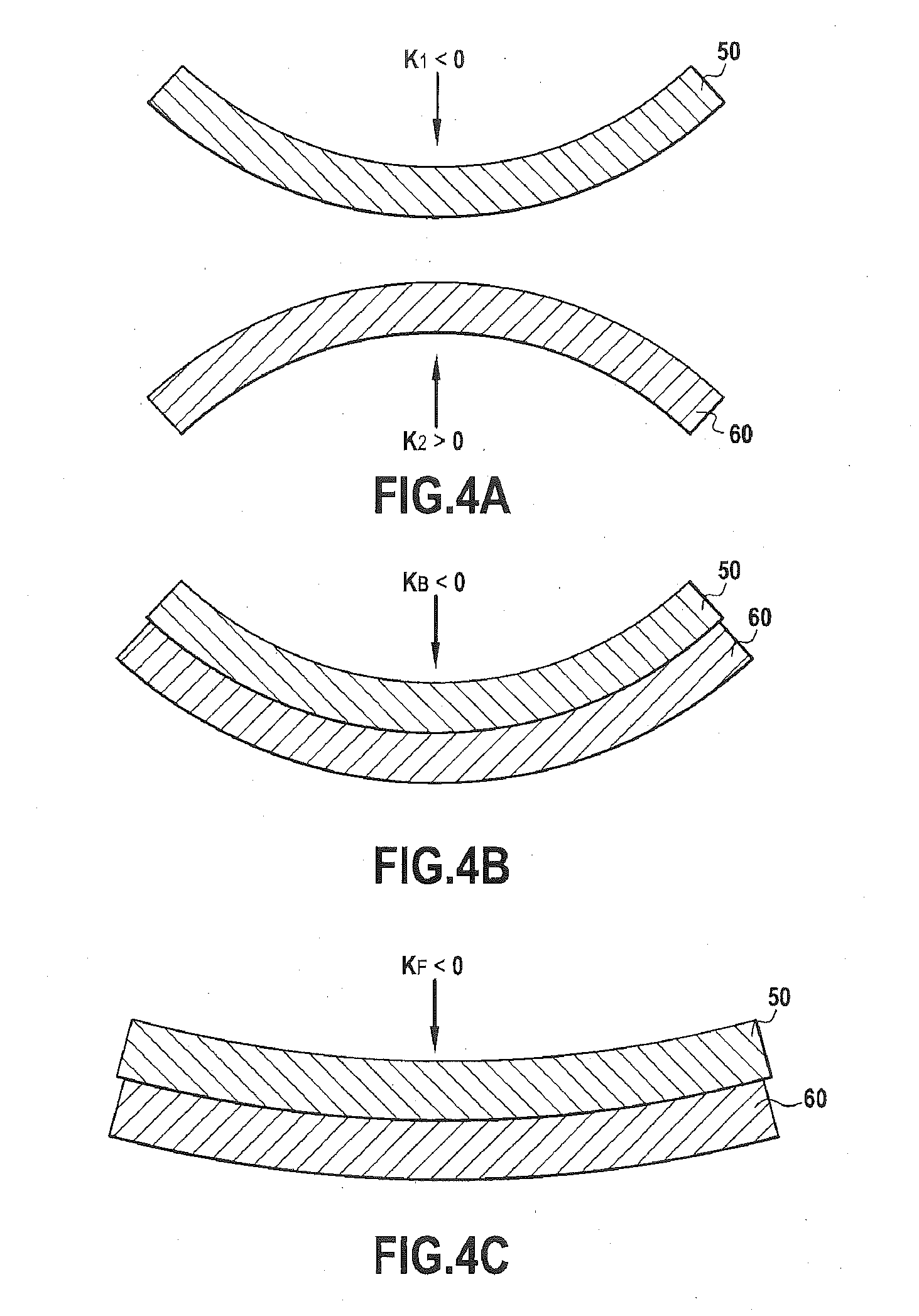Direct bonding method with reduction in overlay misalignment
a direct bonding and overlay technology, applied in the direction of layered products, semiconductor/solid-state device testing/measurement, chemistry apparatus and processes, etc., can solve the problems of difficult, if not impossible, to form, to use the stepper, and to form supplementary microcomponents in alignment, so as to reduce the appearance of overlay
- Summary
- Abstract
- Description
- Claims
- Application Information
AI Technical Summary
Benefits of technology
Problems solved by technology
Method used
Image
Examples
Embodiment Construction
[0045]The invention applies to the direct bonding between two wafers, at least one of these two wafers comprising microcomponents that have been produced before the bonding operation. For the sake of simplification, the term “microcomponents” will refer in the rest of this text to devices or any other features resulting from the technological steps carried out on or in the layers, the positioning of which must be precisely controlled. These may therefore be active or passive components, having simple patterns, contact pads or interconnects.
[0046]To reduce the appearance of the overlay effect described above, the present invention proposes to reduce the inhomogeneous deformations of the wafers resulting from being bonded, by imposing on the wafers, during bonding, a bonding curvature that has been defined beforehand depending on the initial curvature of the wafer or wafers comprising the microcomponents.
[0047]Before bonding, each wafer has an intrinsic curvature which may be concave,...
PUM
| Property | Measurement | Unit |
|---|---|---|
| diameter | aaaaa | aaaaa |
| size | aaaaa | aaaaa |
| intrinsic curvature | aaaaa | aaaaa |
Abstract
Description
Claims
Application Information
 Login to View More
Login to View More - R&D
- Intellectual Property
- Life Sciences
- Materials
- Tech Scout
- Unparalleled Data Quality
- Higher Quality Content
- 60% Fewer Hallucinations
Browse by: Latest US Patents, China's latest patents, Technical Efficacy Thesaurus, Application Domain, Technology Topic, Popular Technical Reports.
© 2025 PatSnap. All rights reserved.Legal|Privacy policy|Modern Slavery Act Transparency Statement|Sitemap|About US| Contact US: help@patsnap.com



